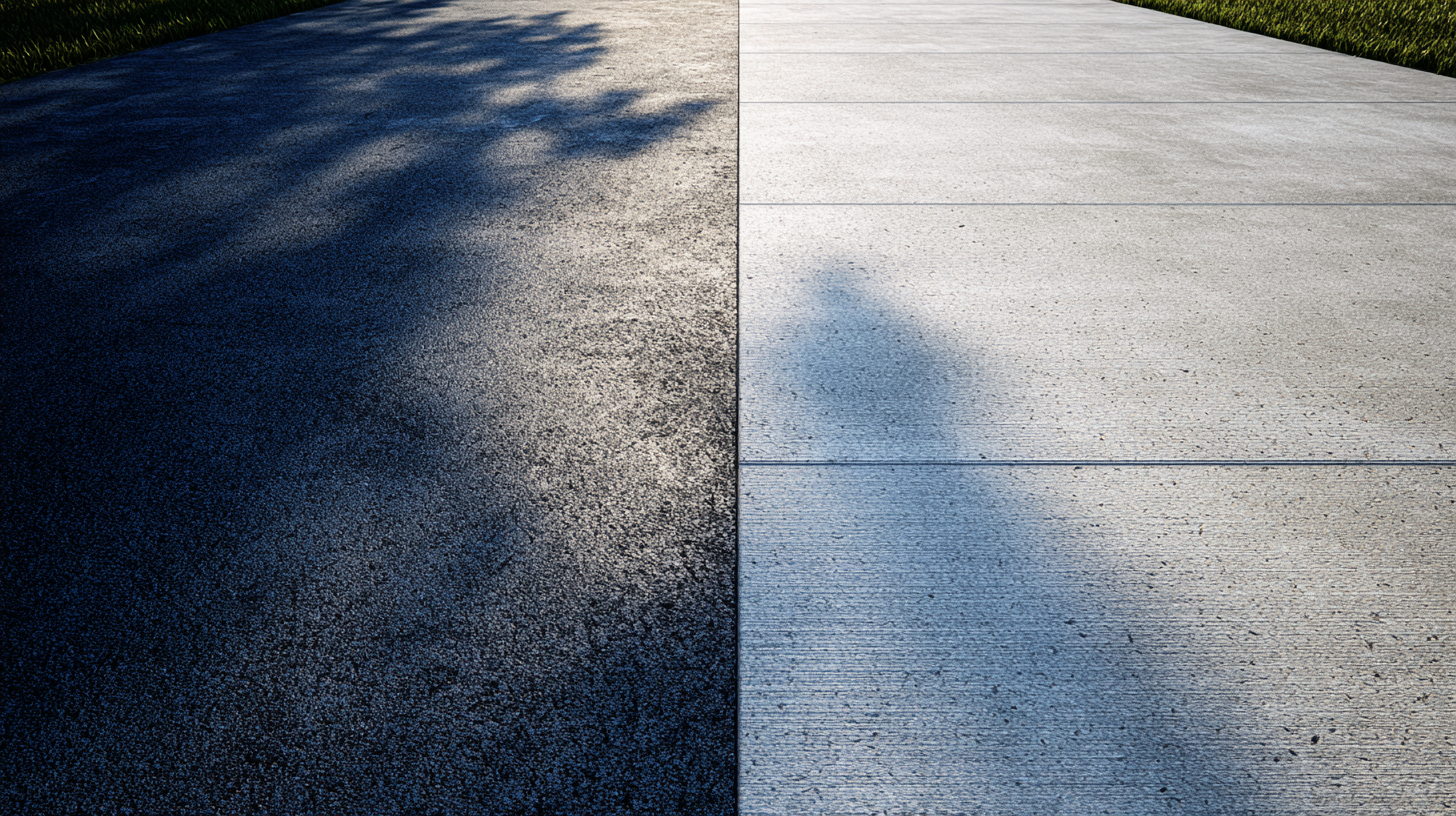How to Estimate the Lifespan of Asphalt vs. Concrete Surfaces
When installing a new driveway, parking lot, or road, understanding the expected lifespan of the paving material is critical. Asphalt and concrete are both strong choices, but their longevity depends on several factors beyond material quality—climate, traffic, maintenance, and installation play a major role.
This guide compares asphalt and concrete durability, key influences on their lifespan, and maintenance tips to protect your investment.
Asphalt Lifespan: What to Expect
Asphalt is a flexible and cost-effective paving solution, ideal for residential and commercial surfaces. With proper installation and regular upkeep, asphalt surfaces last between 15 and 25 years.
Key Factors That Affect Asphalt Durability
Climate Conditions: Asphalt expands and contracts, making it suitable for cold weather but vulnerable to damage from heat, UV rays, and freeze-thaw cycles.
Traffic Load: Light residential use extends lifespan. Frequent exposure to heavy vehicles accelerates wear.
Drainage Efficiency: Poor drainage leads to water infiltration, cracking, and potholes. Proper grading and base prep are crucial.
Routine Maintenance: Crack sealing, pothole patching, and sealcoating every 2–3 years significantly improve longevity.
Signs It's Time to Replace Asphalt
Frequent potholes or alligator cracking
Crumbling or fading pavement edges
Recurring drainage issues despite repairs
Concrete Lifespan: Long-Term Strength
Concrete surfaces are known for their durability and long service life. When installed and maintained properly, concrete can last 30 to 40 years or more.
Key Factors That Affect Concrete Longevity
Freeze–Thaw Cycles: Moisture expansion within the concrete can lead to cracking. Air-entrained mixes reduce this risk.
Installation Quality: Reinforcement, curing time, and slab thickness all influence performance.
Chemical Exposure: De-icers and harsh chemicals can cause scaling or surface deterioration.
Maintenance Needs: Concrete requires less frequent attention than asphalt but benefits from sealing and timely crack repairs.
Signs It's Time to Replace Concrete
Large structural cracks across slabs
Heaving or uneven sections
Surface scaling or erosion beyond patching
Asphalt vs. Concrete: Which Material Lasts Longer?
Concrete typically outlasts asphalt, but real-world durability depends heavily on environmental conditions and maintenance:
In Cold Climates: Asphalt’s flexibility performs better with freeze-thaw cycles
In Hot Climates: Concrete resists softening and cracking
For Heavy Use: Reinforced concrete handles traffic stress more effectively
For Lower Cost: Asphalt is cheaper upfront and easier to repair
How to Extend the Life of Any Pavement
No matter which material you choose, proactive care can add 5–10 years to the surface’s lifespan.
Top Maintenance Tips
Seal asphalt every 2–3 years; concrete every 5–7 years
Repair cracks and holes quickly
Maintain proper grading to avoid pooling water
Limit heavy vehicle exposure on residential surfaces
Keep surfaces clean and free of debris or chemicals
How to Tell When Your Pavement Needs Replacing
If you’re unsure whether repair or replacement is best, assess the following:
Key Evaluation Factors
Age: Asphalt over 20 years, concrete over 35 may be at the end of its life
Condition: Widespread cracks, sinking, or surface failure suggest deeper base issues
Cost: If repairs exceed half the cost of replacement, resurfacing may not be worth it
Professional evaluations are recommended to assess your pavement’s structural integrity and drainage system.
Make an Informed Paving Investment
While asphalt generally lasts 15–25 years and concrete 30–40 years, the right choice depends on your property’s usage, climate, and maintenance plan. With expert installation and care, both materials can deliver long-term value.
Contact Jem Paving today for a personalized consultation and get expert guidance on selecting and maintaining the right surface for your property.

